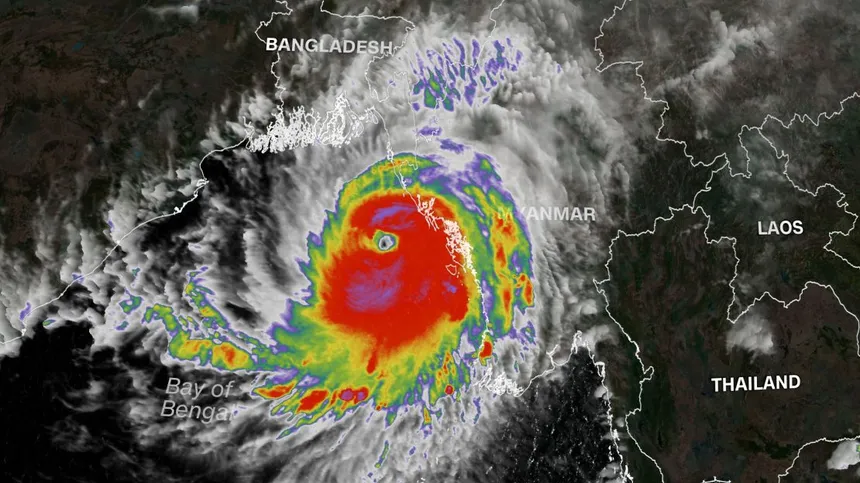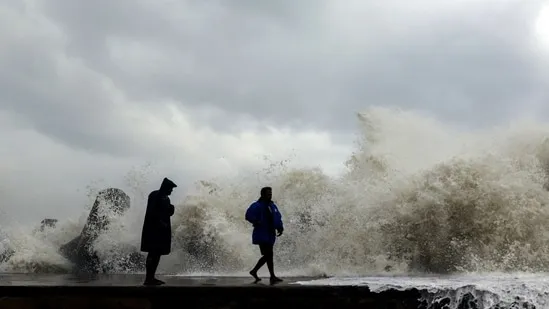Tropical cyclone Mocha has intensified to become an extremely dangerous phenomenon, with the World Meteorological Organisation warning of unprecedented levels of violence, flooding, and landslides in Bangladesh. The storm is expected to make landfall on Sunday near the Bangladesh-Myanmar border, bringing with it powerful winds of up to 175km/h (108mph).
As the cyclone approaches, authorities are scrambling to prepare for its impact. In Bangladesh, where the storm is expected to make landfall, huge preparations are underway to evacuate thousands of people from the world’s largest refugee camp in Cox’s Bazar. The camp, which is home to hundreds of thousands of Rohingya refugees who fled the military-led crackdown in Myanmar in 2017, is at risk of being badly hit by the storm.
“We are preparing for a partial evacuation of the camp, if needed,” said Olga Sarrado, a spokesperson for the UN refugee agency. “We are also preparing tens of thousands of hot meals and jerrycans to ensure that those who stay behind have the necessary supplies.”
The World Health Organisation is also getting ready for the potential fallout, pre-positioning 33 mobile medical teams and 40 ambulances, as well as emergency surgery and cholera kits for the camp. In Myanmar, the WHO has pre-positioned 500,000 water purification tablets among other supplies, which amount to the entire monsoon season stocks.

“If this turns into the level of cyclone we fear, we really need to be ready,” warned Margaret Harris, a spokesperson for the WHO.
Many residents of low-lying villages in Myanmar’s Rakhine state have already fled to higher ground, with thousands preparing to shelter at monasteries in the state capital, Sittwe. For those who have experienced the devastating effects of cyclones before, the prospect of another one is a terrifying thought.
“I told my family we should shelter at this monastery,” said Thant Zaw, a 42-year-old father of six who lost several family members when Cyclone Nargis ravaged southern Myanmar in 2008, killing over 130,000 people. “I can’t lose my family again.”
As the storm approaches, authorities are scrambling to evacuate coastal villages in Myanmar and Bangladesh, with the United Nations office for humanitarian affairs warning of heavy winds and rain that could trigger flooding and landslides farther inland. Around 6 million people across Rakhine and Myanmar’s north-west are already in need of humanitarian assistance.
For Bangladesh, which was last hit by a superstorm in November 2007 when Cyclone Sidr ripped through the country’s south-west, killing over 3,000 people and causing damage worth billions of dollars, the prospect of another such disaster is a haunting reminder of the importance of being prepared.

